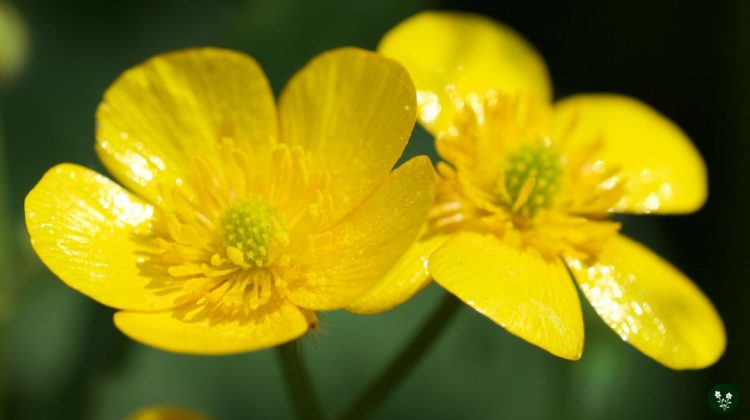
The buttercup flower, known for its vibrant yellow hue, has long been admired and cherished for its many symbolic meanings.
Across various cultures and traditions, these radiant blooms hold different connotations, making them a subject of fascination and admiration in floriculture.
Primarily, buttercup flowers are associated with feelings of joy and positivity, owing to their bright colors that can instantly lighten up one’s day.
They symbolize growth, youthfulness, good health, and even attraction. As a result, they make excellent gifts for various happy occasions and celebrations.
Buttercup flowers also exhibit tidiness and neatness thanks to their well-organized petals and natural elegance. They can even represent a sense of childlike wonder and innocence.
With such a rich symbolism, it’s no wonder that buttercups continue to captivate the hearts of many, enchanting young and adult flower enthusiasts alike.
In this article, we'll cover
1. History of Buttercup Flowers
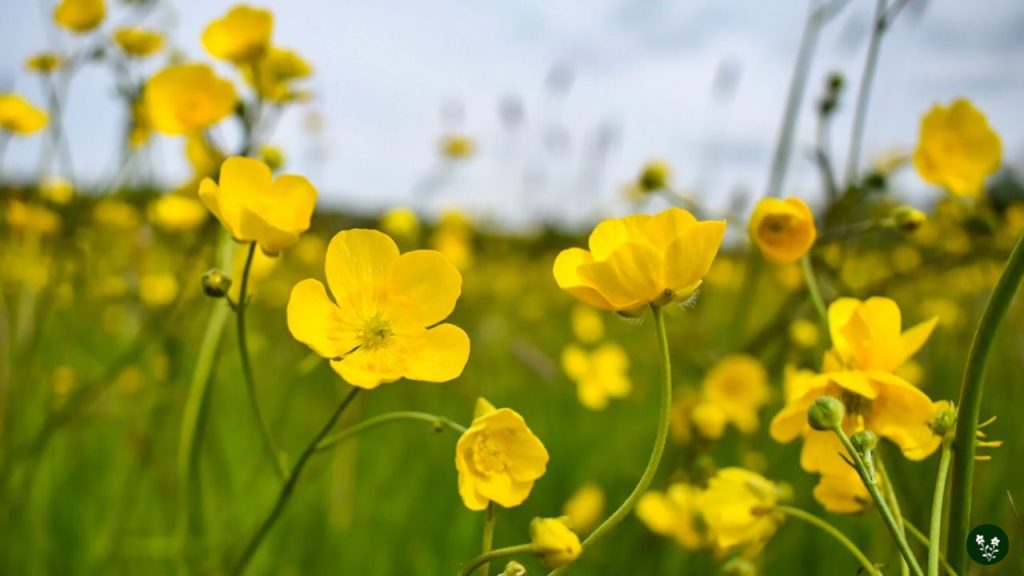
Buttercup flowers have a long and fascinating history, documented in various cultures and folklore throughout the centuries.
Originating in the Persian Empire, these vibrant blooms were celebrated in myths and legends, where they often symbolized love and loss.
These beautiful flowers also held significance in Native American folklore, serving as emblems of growth, youthfulness, good health, and attraction.
Over time, this symbolism extended to incorporate many meanings, such as joy and positivity.
The radiant colors of buttercup flowers can effortlessly brighten up anyone’s day, evoking optimistic and joyful energy that transcends cultures.
In the botanical world, buttercups are classified under the genus Ranunculus. Their Latin name is derived from the word Rana, which translates to “little frogs.”
This association is likely a result of many buttercup species flourishing in areas where frogs were abundant.
Throughout history, different colored buttercups have acquired distinct meanings.
Most commonly found in shades of yellow with green centers, they often symbolize lightness and joy.
However, in some rural locations where buttercups are considered noxious weeds, they may also represent ingratitude.
Over the centuries, buttercup flowers have grown in significance and symbolism, encompassing various emotions and experiences for various cultures.
These enchanting blooms have woven themselves into the tapestry of human history, providing both visual beauty and symbolic depth for their admirers.
2. Cultural Significance
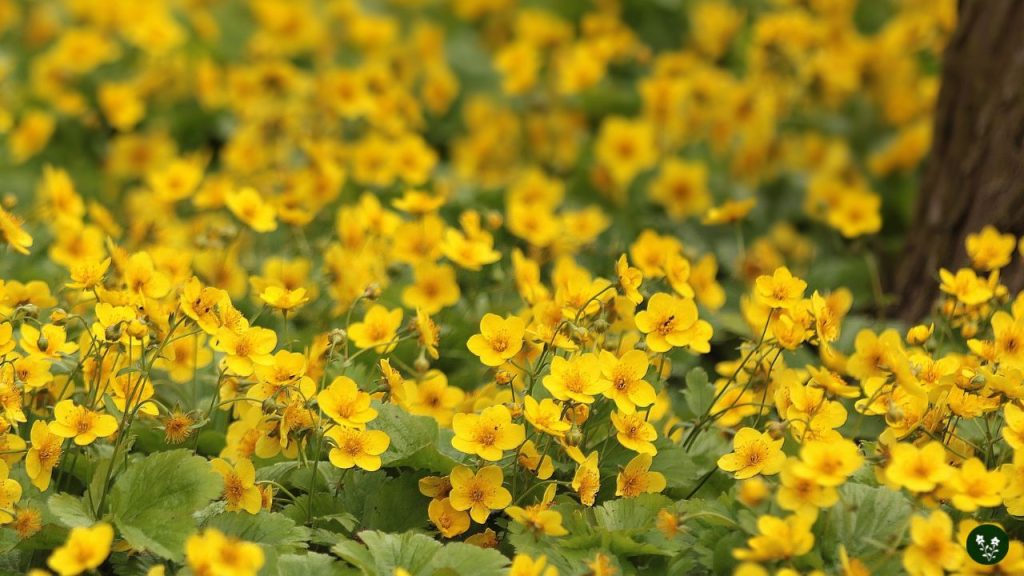
Buttercup flowers hold a significant place in various cultures, embodying a range of meanings and symbolic values.
Their prominence can be found in folklore, legends, and their influence on art and literature.
Folklore and Legends
The symbolic meaning of buttercups has been widely recognized, with roots in myths and tales of love and loss.
Buttercups have been associated with youthfulness, growth, good health, and attraction.
In the Persian Empire, the buttercup played a significant role in stories of love and heartache. At the same time, in Native American folklore, the flower represented the joys of life and nature’s beauty.
In Art and Literature
Buttercup flowers have inspired various creative works, from visual art to literary pieces. Their vivid colors and neat structure often serve as an embodiment of joy and positivity.
Buttercups, with their bright colors and optimistic energy, have been woven into poems, stories, and paintings, bringing positivity and light to the audiences they reach.
In art, buttercups are often used to portray the theme of beginnings and happiness, as their yellow hues represent newfound joy in life.
In literature, the buttercup may symbolize hope or a reminder to embrace the simple joys around us.
Throughout history, the buttercup flower has remained a steadfast symbol of positivity and charm, enriching lives across different civilizations and cultures.
3. Symbolism and Meanings
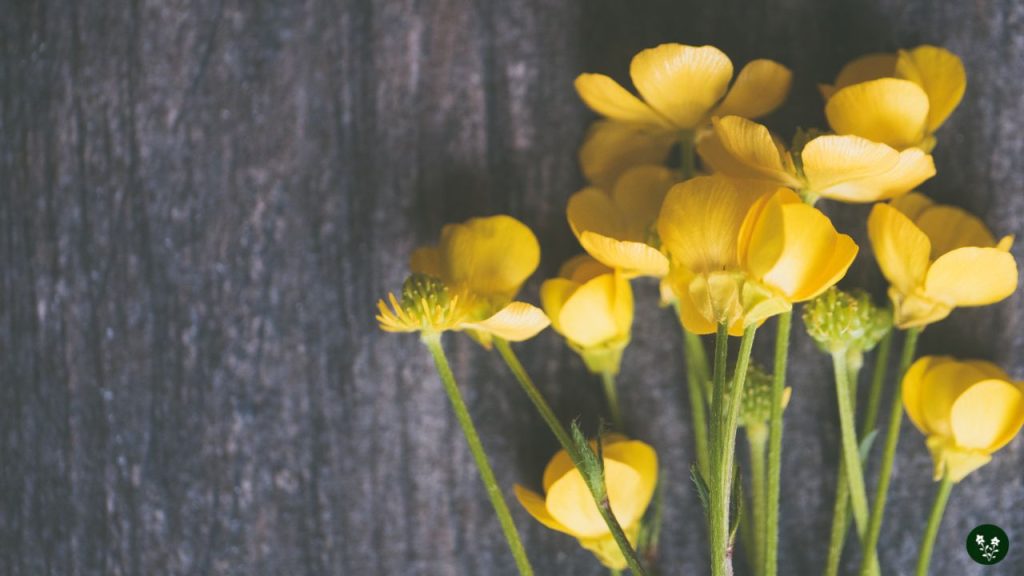
The buttercup flower holds various symbolic meanings, including love, friendship, and positivity.
Let’s explore these meanings in more detail to understand better the intricate symbolism the buttercup represents.
Love and Attraction
Buttercup flowers have been linked to love and attraction tales stretching across various cultures, from the Persian Empire to Native American folklore.
Their bright, cheerful color and delicate petals symbolize youthfulness and good health, making them popular gifts for romantic partners.
The nickname “buttercup” is often used as an expression of affection, highlighting the loving nature of such a relationship.
Friendships
When given as a gift, the buttercup flower can signify the joy and warmth of friendship. Its positive energy can brighten anyone’s day, making buttercups a thoughtful gift for friends of all ages.
Furthermore, the flower’s neat and organized appearance symbolizes the harmony and positivity of solid and lasting friendships.
Positivity
The buttercup flower is a beacon of optimism, with its radiant yellow color representing joy, happiness, and new beginnings.
Incorporating buttercup flowers into one’s daily life can inspire a positive outlook and a lightness of spirit.
Additionally, the flower’s association with neatness and order suggests a sense of purpose and determination to overcome challenges with a positive attitude.
4. Buttercup Flower Colors and Their Meanings
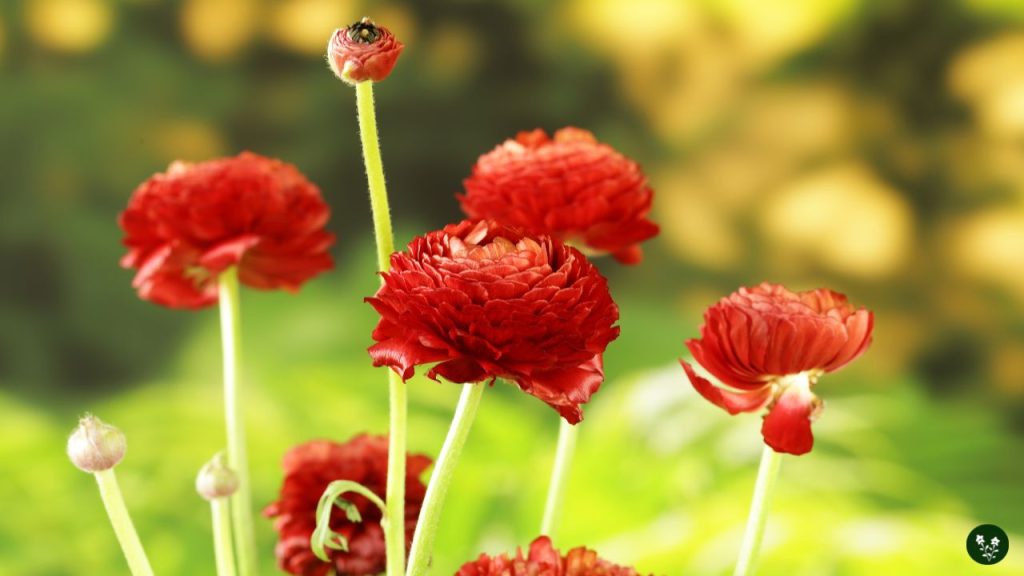
Buttercup flowers come in various colors, with each shade carrying its unique meaning and symbolism.
Yellow Buttercup Flower Meaning
Yellow buttercup flowers are the most well-known and symbolize joy, positivity, and lightness.
These bright colors bring optimism to those who receive them or come across them during their day.
They make excellent gifts for happy occasions and remind us of the positive energy surrounding us.
Pink Buttercup Flower Meaning
Pink buttercup flowers represent romantic interest, happiness, platonic love, and youthfulness.
Their delicate appearance makes them a symbol of elegance and grace, and they are often given as gifts to express affection, appreciation, or even a budding romance.
Red Buttercup Flower Meaning
Red buttercup flowers symbolize passion, love, and intense emotions.
As a vibrant and bold color, red buttercups are often given as gifts to express the depth of feelings two individuals share.
They can be used to celebrate romantic milestones or even as a symbol of a budding relationship.
White Buttercup Flower Meaning
White buttercup flowers are not as commonly found, but they still carry a special symbolism. They can represent purity, innocence, and spirituality.
White buttercups can be given when the desire is to strengthen the spiritual bond between two people or convey a sense of purity and peace.
In conclusion, the colors and meanings of buttercup flowers vary, making them a versatile and meaningful choice for many different occasions.
Knowing the meanings associated with each color, you can select the perfect buttercup flower to convey your message and emotions.
5. Popular Uses of Buttercup Flowers
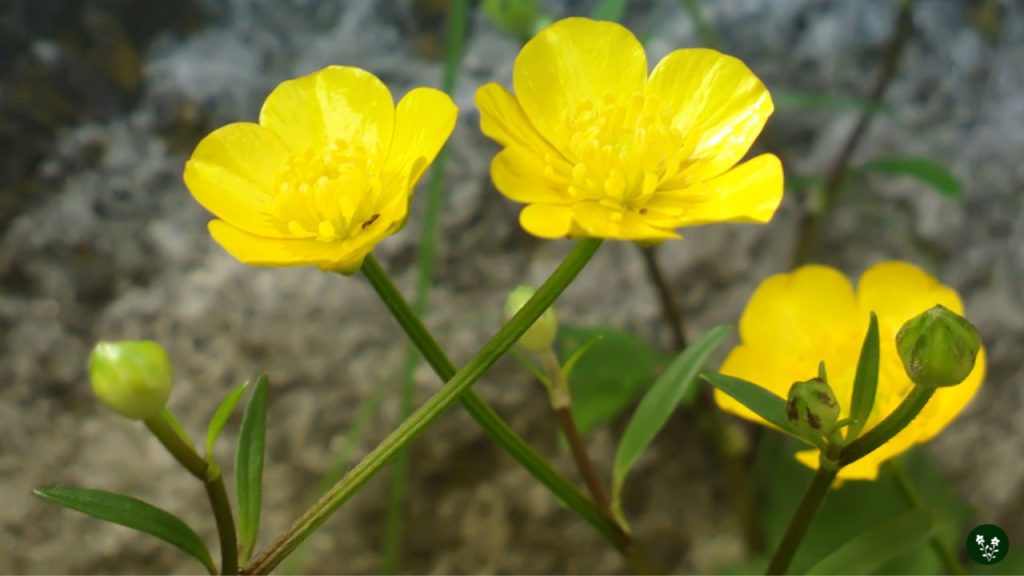
Gardening
Buttercup flowers are well-loved by gardeners for their vivid colors and neat lines.
They can be successfully grown in various garden settings, including flower beds, borders, and containers.
Buttercups thrive in full sun to partial shade and require moist, well-draining soil for optimal growth.
Their bright and cheerful appearance provides visual interest to the garden and attracts pollinators such as bees and butterflies.
Floral Arrangements
Buttercup flowers, particularly the Ranunculus variety, are often used in floral arrangements.
Their distinctive, layered petals and wide range of colors make them an appealing choice for professional and amateur florists.
They can be utilized in small bouquets or vases, adding a touch of elegance and charm to any room. Their relatively long vase life also makes them suitable for weddings and parties.
Symbolic Gifts
Due to their various meanings, buttercup flowers make thoughtful gifts for different occasions.
They symbolize growth, youthfulness, good health, and attraction, making them suitable tokens to convey well wishes and positive energy.
Their bright colors evoke joy and positivity, enhancing their appeal as cheerful and meaningful presents. Gift recipients can appreciate the flower’s beauty and the heartfelt sentiment behind it.
6. Fun Facts About Buttercup Flowers
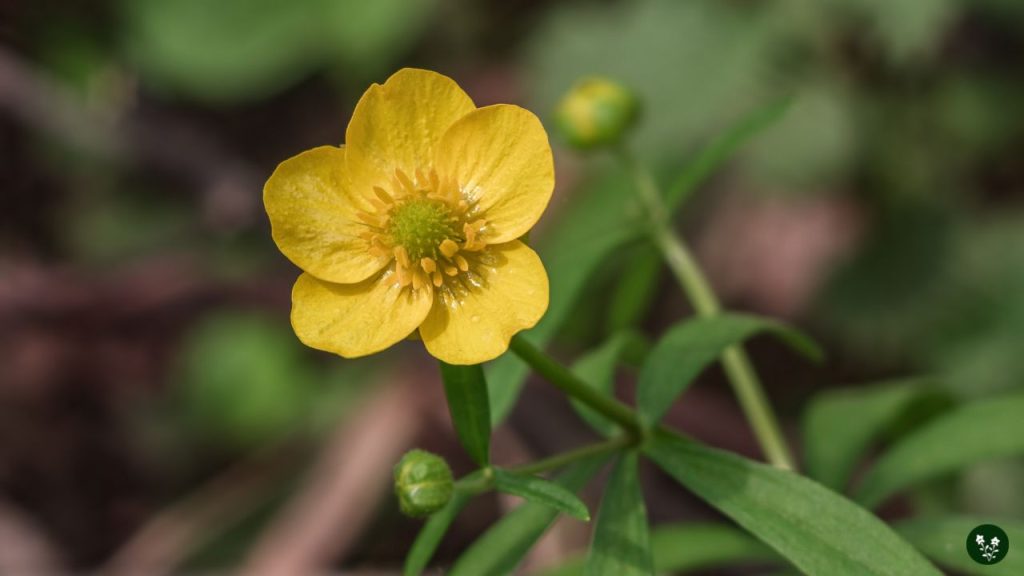
Buttercup flowers, known scientifically as Ranunculus, are flowers that add a touch of joy and positivity to any environment.
Their bright colors can instantly brighten up anyone’s day, and they make terrific gifts for various happy occasions.
Interestingly, buttercups have a unique layer of reflective cells in their petals, giving them a lustrous appearance.
This reflective property can be observed in a popular childhood game, where a buttercup is placed under a person’s chin, and if it reflects, it means they like butter.
In the language of flowers, the buttercup symbolizes growth, youthfulness, good health, and attraction.
These delicate flowers have been featured in various myths and tales of love and loss across multiple cultural traditions, such as the Persian Empire and Native American folklore.
Buttercups also have a unique symbolism when it comes to their color.
They typically come in shades of yellow with green centers, further amplifying their meaning. Yellow represents lightness, joy, and friendship.
So, it’s no surprise that these brightly colored flowers are often associated with positivity and happiness.
Regarding buttercup flower symbolism, remember that the primary meaning is lightness and joy, creating an uplifting and joyful aura wherever they are found.
While symbolizing beauty and attractiveness, these flowers also represent platonic adoration and appreciation for someone’s personality without expressing too intense emotions.
Explore the beauty and symbolism of flowers:
I am reading on the buttercup flowers, mine are so pretty this year and so yellow. I live in WV and seems like each year they get more and more
beautiful. I wait till after they bloom and then I take a shovel and put some in other places and flower beds, they keep multiplying. Like your site here and all the history on them. Bonnie
As a child I had the privilege of living at El Paseo de La Princesa near old San Juan. Of the main botanical adventures my friends and I enjoyed on our tropical home away from home, was the buttercup field near the playground overlooking stone cliffs of the Atlantic, extensions of the El Morrow fortress. Although we painted plenty with berries and roots, we never forced pollen from these perfect little flowers, instead held them up to each other’s chin to see the golden light reflected there.
The plant is mentioned in alchemical texts to refer to Venus (yellow) and was used in springtime festivities due to its fiery nature which helped to purify the soul. See Carl Jung’s collected work number 13, Studies in Alchemy, par. 193.